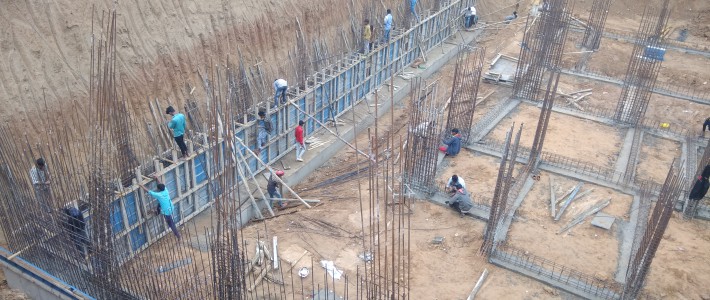Related articles on Designing Buildings
Construction phase plan.
Construction strategy.
Contractors site layout planning.
Haul road.
Lay down area.
Lighting of construction sites.
Main construction compound.
Mobilisation to site: a quality perspective.
Pre-construction information.
Safety signs.
Site area,
Site facilities.
Site office.
Site plan.
Site storage.
Temporary site services.
Temporary works.
Virtual construction model.
Welfare facilities.
Wheel washing system.
Site layout plans are prepared by contractors as part of their mobilisation activities before work on site commences.
They are a crucial part of construction management, as sites can be very complex places involving the co-ordination and movement of large quantities of materials as well as high-value products, plant and people. Effectively and accurately laying out a site can help ensure that the works are undertaken efficiently and safely.
Careful sizing and positioning of temporary facilities can help reduce travel times, congestion, waiting times, and so on, and help to make the site a more effective workplace with better worker morale.
Site layout planning involves four basic processes:
Identifying the site facilities that will be required.
Determining the sizes, and other constraints of those facilities.
Establishing the inter-relationships between the facilities.
Optimising the layout of the facilities on the site.
Site layout plans might include locations for and sizes of:
Zones for particular activities.
Cranes (including radii and capacities).
Site offices.
Welfare facilities.
Off-loading, temporary storage and storage areas (laydown area)
Sub-contractor facilities.
Car parking.
Emergency routes and muster points.
Access, entrances, security and access controls, temporary roads and separate pedestrian routes.
Vehicle wheel washing facilities.
Waste management and recycling areas.
Site hoardings and existing boundaries.
Protection for trees, existing buildings, neighbouring buildings, and so on.
Signage.
Temporary services (including electrical power, lighting, water distribution, drainage, information and communications technology, site security systems, and so on)
Temporary works (such as propping solutions to retained structures, sheet piling details, and so on).
Areas for the construction of mock-ups for testing.
Fabrication facilities.
Problems caused by poor site layout planning can include:
Inappropriate storage which can result in damage to products and materials.
Poor siting of plant.
Poor siting of welfare facilities.
Inadequate space provision.
Unsatisfactory access.
Security and safety issues.
Poor way finding (due to complex layouts or inadequate signage).
Demoralised workers, delays and increased costs.
As sites will change in nature during the course of the works, there may be a number of different site layout plans for different phases,
and there may be more detailed plans showing particularly complex areas or sequences or describing specific functions.
The use of building information modelling (BIM) can help describe the construction site in three dimensions and through different phases, effectively creating a virtual construction model.
Site layout plan for start New Building construction And Arrengements And require Centing Materials
04 Dec

Leave a Comment